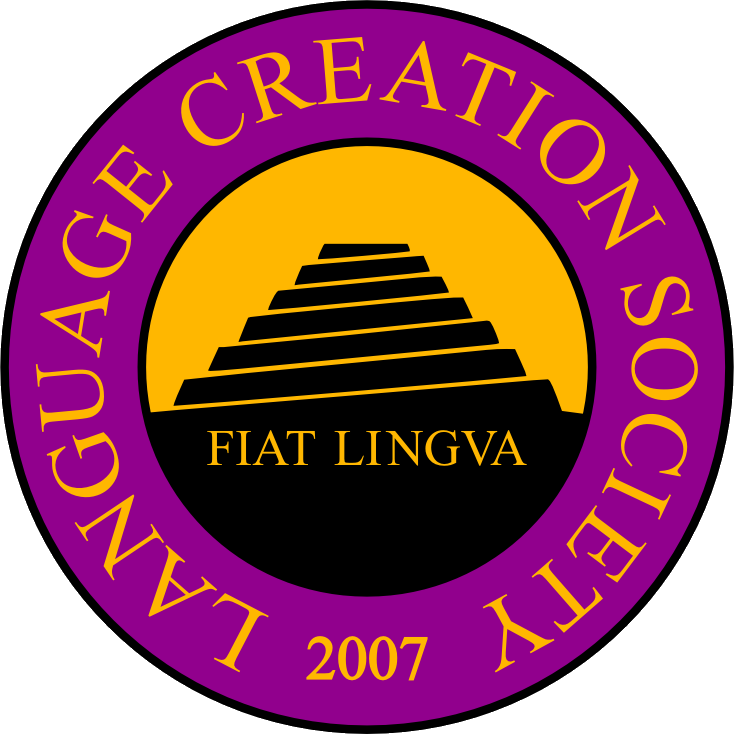LCC2 Speakers
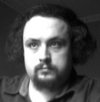
Jeff Burke rtoennis@nullyahoo.com
Language as Growth-in-Time
When we first learn foreign languages, we’re often introduced to a way of thinking that’s dangerous to understanding what a language actually is and how it works: questions of “why” directed at baroque inflectional or conjugational systems are answered with a curt “because it’s just that way.” But there’s almost always a good reason why, and that why lies in the history of the language. I’ll be discussing language as growth-in-time, as opposed to a static entity, and what implications this has for conlangers whose aim is naturalistic languages. I’ll show how to create a realistic and textured phonological history for a conlang family. In addition to sound change, I’ll also cover changes driven by conceptual shifts among speakers of a language, with the development of the four-way gender distinction in Iroquoian as a paradigm case. I’ll also use the development of the animacy distinction in my own Central Mountain family to show how such effects can be achieved in conlangs.
![]() VIDEO of Presentation | Presentation (ppt)
VIDEO of Presentation | Presentation (ppt)
Jeff S. Burke is from central Indiana, and holds a BA in Music from Ball State University in Muncie, Indiana. He has worked as a sound engineer for the last five years in the Indianapolis area. Among his many interests are the Algonquian and Iroquoian language families, which he has spent more than a decade studying and lusting after in his quest to build a conlang family of his own.
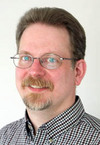
Donald Boozer donaldboozer@nullyahoo.com
Drushek: The Sound of No Voice Speaking
The Drushek speak a language devoid of voicing and employ a gestural component to denote semantic functions and some morphemes. How does one transcribe the hisses, clicks, fricatives, and silent gestures of such a language?
![]() VIDEO of Presentation | Presentation (ppt)
VIDEO of Presentation | Presentation (ppt)
Don Boozer lives in Ohio and is currently a Subject Department Librarian in Literature at Cleveland Public Library, one of the nation’s largest public research libraries. He has increased the library’s holdings of relevant books in the field of conlanging by purchasing copies of the Klingon translations of Gilgamesh and Shakespeare, Elgin’s dictionary and grammar of Laadan, and Salo’s A Gateway to Sindarin, among others. He has also presented programs on conlangs in literature and films and the basics of language creation, as well as published articles on conlangs including an upcoming one on introducing conlanging to teens. His interest in the “secret vice” stems from an early fascination with languages and scripts going all the way back to discovering On Beyond Zebra! by Dr. Seuss in his elementary school library. His on-going projects including working on languages for inhabitants of his conworld, Kryslan, which include Umod, Elasin, and Drushek and learning ancient Egyptian as part of an online study group.

John Clifford clifford-j@nullsbcglobal.net
The Problems with Success: What happens when an opinionated conlang meets its speakers
Once there are users other than the creators of a language, the relation between the creators and their language inevitably changes: it is no longer their language exclusively. This difference manifests itself unpleasantly in the form of challenges to various aspects of the language: from its underlying philosophy and purpose to its writing system. These controversies have to be resolved eventually, but the creators cannot be sure that their solutions will be accepted or that the integrity of the language can be maintained. This talk is about several of the most common types of challenges, taking the situation in toki pona for its examples. It concludes with some advice on how to minimize the unpleasantness.
John E. Clifford (Parks-Clifford — whence his Loglan and Lojban sobriquets, pc and pycyn — for the duration of one wife) received a BA from Michigan State, then spent a year at Priceton before settling in at UCLA for a decade. In that time he acquaired an MA in Linguistics and a PhD in Philosophy (dissertation on natural language tense and tense logic). He spent 33 years in the Philosophy Department of the University of Missouri – St. Louis, teaching Logic (from Critical Thinking through Goedel), Asian Philosophy, and Philosphy of Religion, and occasionally other thinks that needed teaching. He was an Esperantist from his second year at Exeter, though mainly lapsed. He first worked with Loglan in 1960 (after the Scientific American article) as a contribution to the machine translation program at RAND. When Loglan reemerged in 1975, he reupped, becoming the first editor of The Loglanist, a member of the board of The Loglan Institute and eventually Vice-President, then President. He joined the Logical Language Group in the mid-80s and has participated actively in the development of Lojban, mainly advocating more logic in keeping with his early exposure — under Carnap and the like — to the notion of a logically perfect language. He was involved with aUI while sabbaticating on Iowa and has recently taken up toki pona and an good old Logical Positivist examination of NSM. He is still awaiting a testable version of the real Sapir-Whorf Hypothesis and the language for the test.

Sai Emrys conlangs@nullsaizai.com
Sai is the organizer of this conference and LCC1, two-time teacher of the Conlangs DE-Cal course, founder of the LiveJournal Conlangs community, and founder of the Language Creation Society, a 501(c)3 nonprofit corporation. He finished his B.A. in Cognitive Science at UC Berkeley in 2006, and is currently employed as a consultant by Medtronic Inc., working on “international projects”; former jobs have included database design, systems administration, tutoring, programming, and massage therapy. He is looking for a graduate program for 2008 to begin his PhD in Cognitive Science, and for other work in the meantime. Sai can converse in English, Russian, Spanish, French, American Sign Language, and occasionally Japanese, and has some rusty knowledge of Mandarin and Arabic. He currently lives in Oakland CA with his cat, and is interested such things as wordplay, massage, empathy, music, good food, computers, neuroscience, linguistics, meditation, hiking, energy work, and (of course) in seeing how far the boundaries of language creation can be pushed – with an eye towards effecting cognitive change and empowerment.

James Gang james@nullverbotomy.com
My Right-Brain Verbotomy: How inventing words changed the way I think
The creative process can be seen to revolve around six design principles: design, story, symphony, empathy, play and meaning. Artist and Writer, James Gang will examine how these principles, which were outlined by author Daniel Pink in his book “A Whole New Mind”, apply to language creation in general, and vocabulary invention in particular, by reviewing how the players at Verbotomy have worked together to create, develop and use an invented vocabulary.
Presentation (pdf)
James Gang (a.k.a. William James) is the creator of the Verbotomy, the daily the create-a-word game. He works as a writer, programmer and artist. He is also the co-founder of The James Gang Advertising Inc., and has led the company for over a decade, winning numerous awards including the writing credit for the “Digital Gold Marketing Award” and “Best in Show in 2003” for his work for Nike Canada. Other Casual Game projects include: Office-Politics, the game everyone plays; Whack The PM, Canada’s national election spoof and poll; and The Room, an interactive personality quiz created for Umbra.

Clint Hutchison VirtueIncarnate@nullhotmail.com
Universal Semantic Markers
When quickly jotting down notes, it is handy to have small markers to modify abbreviations, acronyms, symbols, or any other conceptual signifiers which do not easily mesh with the language being written in. This talk would cover the semantic markers I use in my day-to-day affairs, solicit any similar devices from the attendees, and possibly devise new ones, time and collective ingenuity permitting.
Clint studied Arabic and Russian in college and has worked as a sideshow talker, closed-captioner, and court reporter. He was raised in Seattle but moved to Dallas/Fort Worth in 2001 to do data analysis for a medical device company.
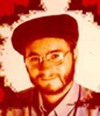
Jim Henry jimhenry1973@nullgmail.com
Glossotechnia
Glossotechnia is a card game in which the players collaboratively create a language. The cards in play define the set of phonemes available for and the phonotactic constraints imposed on newly coined words, as well as the basic syntax of the language (word order, etc.). In addition to drawing and playing cards representing phonemes, syllable shapes, word orders and so forth, players coin a new word on each turn, demonstrating its meaning to the other players with charades, drawings, pointing to examples, and (as the game progresses) using existing words of the new language. Cards drawn from a separate “translation challenge sentence” deck provide a private goal to each player and a common goal for the all the players.
I will briefly describe the rules of the game, its history as it developed from an earlier, more free-form charade conlang game, and the results of early playtesting. I’ll also talk about how it might be used to teach some aspects of linguistics.
![]() VIDEO of Presentation | Presentation (pdf) | Talk Outline (html) | Glossotechnia Rules (html)
VIDEO of Presentation | Presentation (pdf) | Talk Outline (html) | Glossotechnia Rules (html)
Jim Henry was born in 1973 in Decatur, Georgia, and has lived in the Atlanta area most of his life. He started creating constructed languages in 1989 after discovering Tolkien’s Quenya and Noldorin (in _The Book of Lost Tales_ rather than his better-known works), but his early works were all vocabulary and no syntax. In 1996, after discovering Jeffrey Henning’s conlang site and the CONLANG mailing list, he started creating somewhat more sophisticated fictional languages; and in 1998, he started developing his personal engineered language gjâ-zym-byn, which has occupied most of his conlanging energies since then, and in which he has developed some degree of fluency. He works professionally as a software developer, and does volunteer work for the Esperanto League for North America and for St. Patrick’s Catholic Church in Norcross, Georgia.

David J. Peterson dedalvs@nullgmail.com
The Evolution of Sidaan
Sidaan began its existence as an SOV language devoid of verbal agreement. Through a series of simple changes, I attempted to emulate the historical development of a system similar to languages of the Philippine type (Tagalog, Malagasy, etc.), and turned Sidaan into a VSO language with subject marking on the verb. The historical change indirectly produced two verbal slots in the standard Sidaan sentence, producing a kind of VSOV word order. In conclusion, I’ll remark upon periods of instability in language, and how conlangs as a medium are able to take advantage of such stages that generally exist for a short time (relatively speaking) in natural languages.
![]() VIDEO of Presentation | Presentation (ppt)
VIDEO of Presentation | Presentation (ppt)
David J. Peterson received BA’s in English and Linguistics from UC Berkeley and an MA in Linguistics from UC San Diego, where he discovered language creation via a class on Esperanto. Since then, he’s made it a goal of his to learn more about language and linguistics in order to create more naturalistic languages. He’s the author of seven or so languages (among them Zhyler and Kamakawi), and is now an associate editor of and contributor to The Speculative Grammarian. David has recently left the confines of academia at UCSD for the glamorous world of writing instruction at Fullerton Community College (commonly referred to without the “Community” part).

John Quijada
Language Personalities: How the Interplay of Phonology, Phonotactics and Morpho-phonology Creates a Linguistic Aesthetic
This talk is an objective analysis of the subjective effect that different phonemic inventories, phonotactic patterns, stress patterns, and prosodic/tonic patterns have on giving a language it’s particular “sound” and how that sound gives rise to an emotional impact on the listener, accompanied by an analysis of the extent to which various conlangs succeed (whether intentionally or inadvertently) at accomplishing the same thing.
![]() VIDEO of Presentation | Presentation (pps) | Handout (doc)
VIDEO of Presentation | Presentation (pps) | Handout (doc)
John Quijada, a California native, has a degree in linguistics and is the creator of Ithkuil, a philosophical language on which he worked for 25 years, which he is now revising into a language called Ilaksh. His talk on cognitive linguistics at the First Language Creation Conference was well-received. He has written a novel exploring the implications of quantum physics and cognitive science, and enjoys many pasttimes and hobbies including music, art, European travel, astronomy, protozoology, cooking, and cats.
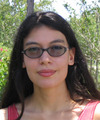
Lila Sadkin lsadkin@nullalltel.net
Tenata: dissolving lexical categories
Tenata: dissolving lexical categories. I will discuss the grammatical structure of my conlang, Tenata, in terms of how a speaker of Tenata divides her language into parts of speech Tenata does not end up having the categories of noun, verb, adjective, adverb in the same way most languag es we’re accustomed to uses them, and instead has “semantic roots,” “nominal inflection,” “verbal inflection”, and “discourse particles.” These are the four parts of speech to a Tenata speaker, and each one is present in (almost) every Tenata sentence.
Lila Sadkin received her BA in Linguistics from the University of Florida in May 2007. She has been interested in language all her life and her study of linguistics has vastly improved the quality of her conlanging. Tenata is her first “real” conlang, drawing inspiration from Native American languages and Chinese, and she has plans for many more in the works, all of which exist on her con-continent. She also enjoys science fiction, cooking, computery th ings, photography, and has pursued other artistic endeavors with varying degrees of sucess. She is indebted to Dr. Hardman at the University of Florida for her inspiration to head along the path of linguistics in science fiction.

David Salo dsalo@nullyarinareth.net
Giving historical depth to language construction
Many constructed languages lack an essential feature of natural languages — time-depth, or internal evidence of having developed over a long period of time. However, it is possible to create a more natural-looking language by imitating key features of natural language change. These include sound changes, both sporadic and systematic; morphological simplification and diversification; incorporating words and structures from other languages. Appropriate use of such devices can produce a more realistic-looking conlang, as well as allowing for intelligible and interesting relations between conlangs.
David Salo is a graduate student in the Linguistics Department of the University of Wisconsin, currently working on the morphophonology of Vedic Sanskrit. He was a linguistic advisor and translator of the languages of J.R.R. Tolkien for The Lord of the Rings series of movies, and has written a book about Tolkien’s Sindarin language. Other interests include Persian, Latin, Tocharian, and the phonology and phonetics of Early Modern English.
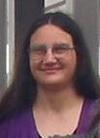
Sylvia Sotomayor terjemar@nullgmail.com
Verblessness in Kēlen
Kēlen is a language without verbs. This talk will include short account of Kēlen grammar with an overview of those grammatical structures that make a language without verbs possible. The method Kēlen uses to dispense with verbs is to fold the syntactic function of verbs into a set of four relationals, and to leave the semantic function as a substantive.
![]() VIDEO of Presentation | Presentation (ppt) | Handout (pdf)
VIDEO of Presentation | Presentation (ppt) | Handout (pdf)
Sylvia Sotomayor has been conlanging since she was 14. She has a BA in Linguistics from UC Berkeley. A Kēlen grammar, dictionary, and some texts can be found at http://www.terjemar.net/kelen.php. Notes on the planet Terjemar can be found there, too. She currently lives in Claremont, CA, with too many cats and not enough computers.
